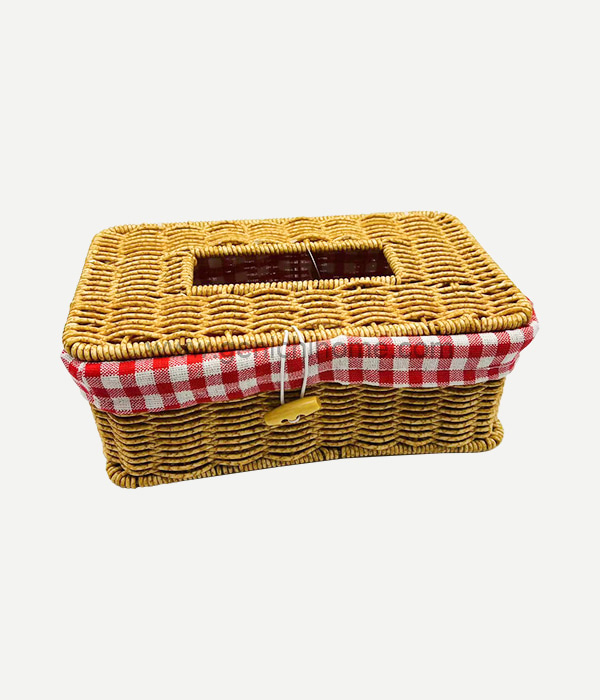In addition to its durability, our wooden rice spoon is also heat-resistant. It can withstand high temperatures without warping or melting, ensuring s...
See DetailsMaintaining proper hygiene in everyday household items is essential for preventing the spread of germs and bacteria. While tissues themselves are designed for cleanliness, the tissue box—the container that holds them—can become a breeding ground for contaminants if not cleaned regularly. The frequency of cleaning depends on the type of tissue box, its location, usage level, and material. Below is a detailed breakdown of how often tissue boxes should be cleaned to ensure optimal hygiene.
1. General Cleaning Frequency: Weekly for High-Use Areas
For tissue boxes in high-traffic areas such as the living room, kitchen, or bathroom, it is recommended to clean them at least once a week. These areas are frequently accessed by multiple people and are more likely to accumulate dust, skin oils, and airborne particles. Regular weekly cleaning helps prevent the buildup of bacteria and mold, especially if the box is near sinks, stoves, or toilets where moisture and grease are present.
2. Bathroom Tissue Boxes: Clean Every 3–5 Days
Bathrooms are particularly prone to humidity, steam, and bacterial contamination from flushing toilets and handwashing. Tissue boxes placed near sinks or toilets can absorb moisture, which may dampen tissues and promote mold growth. Therefore, bathroom tissue boxes should be cleaned every 3 to 5 days, and the surrounding area should be kept dry. If using a refillable container (e.g., a plastic or metal dispenser), ensure it is thoroughly dried after cleaning to prevent microbial growth.
3. Kitchen Tissue Boxes: Clean Weekly, Especially Near Cooking Areas
In the kitchen, tissue boxes are often used for wiping hands or cleaning spills, but they can also be exposed to cooking grease, food particles, and strong odors. If the box is near the stove or sink, it should be cleaned weekly with a mild disinfectant. Wipe both the exterior and interior surfaces, and avoid placing tissues directly on countertops where raw food is handled to reduce cross-contamination.
4. Bedroom and Office Tissue Boxes: Clean Every 1–2 Weeks
Tissue boxes in private spaces like bedrooms or home offices are typically used less frequently and by fewer people. However, they can still collect dust and skin cells. For optimal hygiene, clean these boxes every 1 to 2 weeks. If someone in the household is sick, increase the cleaning frequency to every few days to minimize the risk of germ transmission.
5. Car Tissue Boxes: Clean Monthly or After Illness
Many people keep tissue boxes in their vehicles for convenience. However, cars can experience extreme temperatures and are often dusty or exposed to food crumbs. It’s advisable to clean car tissue boxes once a month and replace the tissues regularly. After a passenger has been ill, discard the remaining tissues and sanitize the container immediately.
6. Material-Specific Cleaning Guidelines
Plastic/Metal Boxes: These are easiest to clean. Wash with warm, soapy water or disinfectant wipes weekly.
Fabric-Covered Boxes: Remove the cover if possible and wash it in the machine. Clean the inner frame monthly.
Wooden Boxes: Avoid soaking; instead, use a dry or slightly damp cloth to prevent warping. Dust regularly and deep clean every 2–3 weeks.
Paper/Cardboard Boxes: These are disposable and should not be cleaned. Once opened, they should be used quickly and discarded after the tissues are gone to avoid contamination.
7. Signs It’s Time to Clean Sooner
Even if you follow a schedule, watch for these red flags:
Visible dust, stains, or smudges
Musty or unpleasant odors
Damp or clumped tissues
Mold spots inside the box
Frequent sneezing or illness in the household
If any of these occur, clean the box immediately.
8. Best Cleaning Practices
Remove all tissues and discard if damp or soiled.
Wipe the interior and exterior with a disinfectant wipe or a cloth dampened with soapy water.
Allow the box to air dry completely before refilling.
Wash reusable fabric covers in hot water with detergent.
For optimal hygiene, tissue boxes should be cleaned regularly based on their location and use. As a general rule:
High-use areas (bathroom, kitchen): every 3–7 days
Low-use areas (bedroom, office): every 1–2 weeks
Car tissue holders: monthly or after illness
Disposable cardboard boxes: replace after use, do not clean
By maintaining a consistent cleaning routine, you can ensure that your tissue box remains a hygienic and functional part of your daily life, helping to protect your household from unnecessary exposure to germs.
